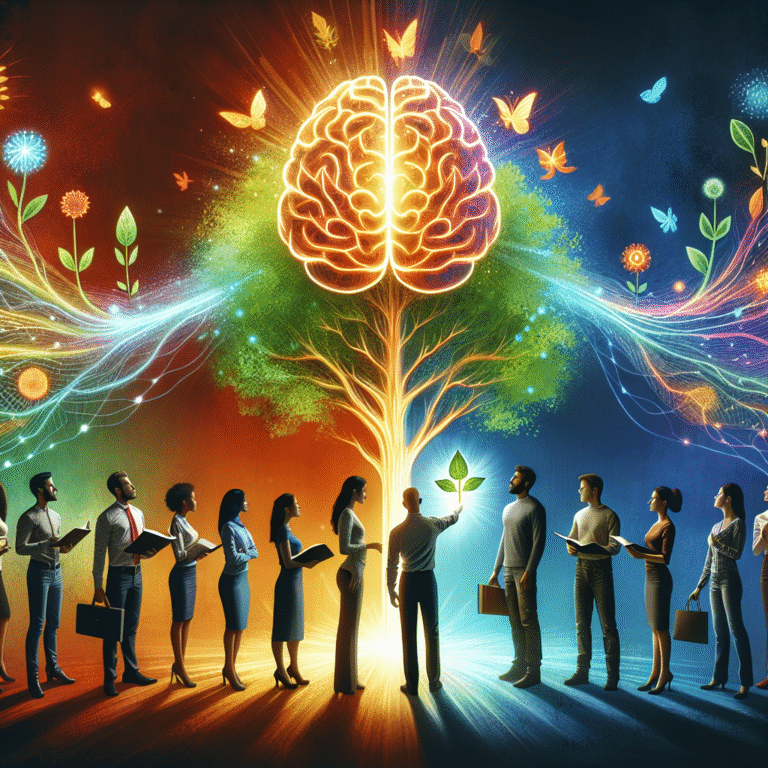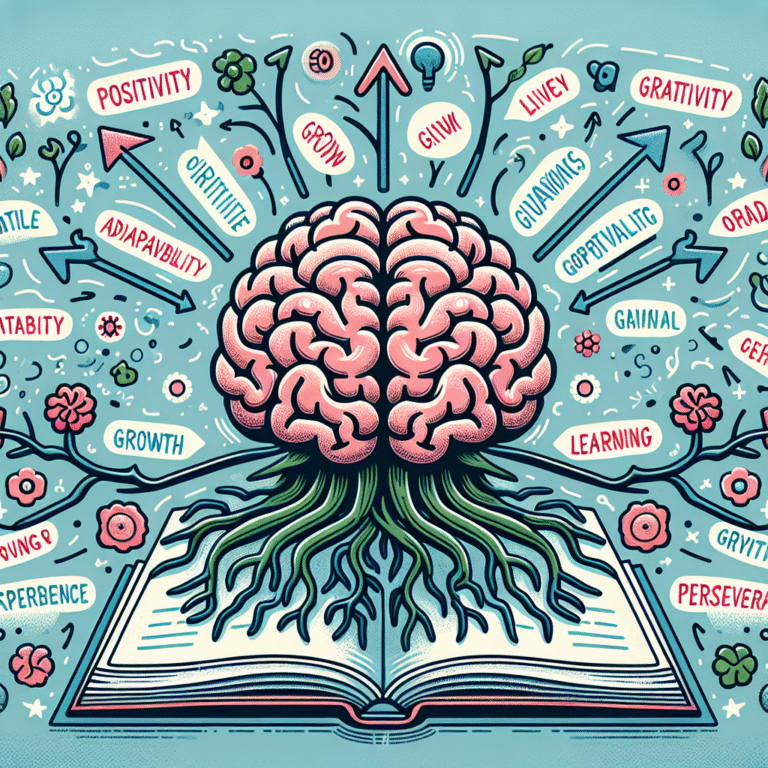
Introduction
Imagine standing at the edge of a vast canyon, the wind rushing past you, whispering possibilities that stretch far beyond your current view. This is the difference between a fixed mindset and a growth mindset—a choice that can profoundly impact your life, career, and relationships. In our rapidly evolving world, the ability to adapt and grow is essential. This article, Breaking Free: How to Overcome a Fixed Mindset and Embrace Growth, sheds light on how to transition from a limiting mindset to one that unlocks your potential.
Understanding Mindsets
What Is a Fixed Mindset?
A fixed mindset is a belief that your abilities, intelligence, and talents are fixed traits. When you possess a fixed mindset, you tend to avoid challenges, give up easily, see effort as fruitless, and feel threatened by the success of others. This mindset can cage you in a limiting perspective, preventing personal growth and fulfillment.
What Is a Growth Mindset?
In contrast, a growth mindset centers around the belief that you can develop skills and intelligence through dedication and hard work. This mindset embraces challenges, perseveres through setbacks, sees effort as a path to mastery, and finds inspiration in the success of others. Breaking Free: How to Overcome a Fixed Mindset and Embrace Growth is all about cultivating this transformative way of thinking.
The Science Behind Mindsets
Psychologist Carol Dweck pioneered the concept of growth and fixed mindsets. Her research suggests that fostering a growth mindset can lead to higher achievement and deeper resilience. Here’s a table summarizing the key differences:
| Trait | Fixed Mindset | Growth Mindset |
|---|---|---|
| View of Challenges | As threats | As opportunities |
| Response to Failure | Defeat and shame | Learning experience |
| Effort | Seen as pointless | Essential for growth |
| Feedback | Defensive and resistant | Constructive and insightful |
| Inspiration from Others | Envy and insecurity | Motivation and encouragement |
Identifying Your Mindset
Self-Assessment
Before you can break free from a fixed mindset, it’s essential to understand where you stand. Ask yourself the following questions:
How do you react to setbacks?
- Do you give up or try again?
Do you seek out challenges?
- Are you willing to step out of your comfort zone?
- How do you view effort?
- Do you see it as necessary, or do you feel it indicates lack of talent?
By reflecting on these questions, you can begin to identify the areas of your life that may be influenced by a fixed mindset.
Case Studies on Growth Mindset
Case Study 1: J.K. Rowling
J.K. Rowling, the author of the Harry Potter series, faced numerous rejections before her work was published. Each rejection was not a dead end for her but an opportunity to improve her writing. Rowling’s journey exemplifies the essence of Breaking Free: How to Overcome a Fixed Mindset and Embrace Growth by transforming setbacks into stepping stones to success.
Analysis
Rowling’s persistence is a powerful reminder that embracing failure as part of the journey leads to eventual triumph. Identifying rejections as feedback can shift your perspective on challenges.
Case Study 2: Michael Jordan
Michael Jordan, often cited as one of the greatest basketball players of all time, was famously cut from his high school team. Instead of allowing this setback to define him, he used it as motivation to work harder. Jordan’s story illustrates that dedication and resilience can turn obstacles into achievements.
Analysis
Jordan’s response to failure underlines the importance of hard work and dedication in fostering a growth mindset. By viewing challenges as opportunities, we can achieve greater heights.
Strategies for Developing a Growth Mindset
1. Embrace Challenges
Start viewing challenges as opportunities rather than threats. Seek out new experiences that push you out of your comfort zone. Remember, growth often occurs in discomfort.
2. Cultivate Curiosity
Ask questions and seek to learn from every experience. Curiosity is a powerful driver of growth; it opens the door to new knowledge and skills.
3. Reframe Failures
When you experience setbacks, reflect on what you can learn. Instead of seeing failure as a negative, view it as a crucial part of the learning process.
4. Celebrate Effort
Recognize the hard work that goes into any achievement. Celebrating effort can reinforce the value of persistence and resilience.
5. Seek Feedback
Constructive criticism is invaluable for growth. Welcome feedback as a tool for improvement, not as a personal attack.
6. Surround Yourself with Growth-Oriented Individuals
Spending time with people who have a growth mindset can help inspire and motivate you. Their attitudes towards challenges can influence your outlook.
Mindset Shifts in Daily Life
Professional Environment
In the workplace, adopting a growth mindset can lead to enhanced collaboration and innovation. A culture that encourages experimentation and learning fosters greater creative solutions.
Academic Settings
Students with a growth mindset tend to achieve higher. Encouraging learners to see challenges as avenues for growth promotes resilience and persistence in academic endeavors.
Personal Development
In your personal life, committing to a growth mindset opens up new possibilities for self-improvement, relationship-building, and overall fulfillment. It’s about realizing that you have the power to change.
Conclusion
Breaking Free: How to Overcome a Fixed Mindset and Embrace Growth is not just a concept; it’s a transformative journey that requires intentional effort, reflection, and resilience. By recognizing the signs of a fixed mindset and implementing strategies to develop a growth mindset, you open yourself up to endless possibilities and personal development.
Motivational Takeaway
Remember, the journey towards a growth mindset is ongoing. It’s about embracing challenges, seeking feedback, and remaining open to learning. You have the power to break free from limitations and unlock your fullest potential. The choices you make today will define the person you become tomorrow.
FAQs
1. How can I identify if I have a fixed mindset?
Look for patterns in your reactions to challenges, effort, and feedback. If you often feel threatened by others’ success or avoid challenges, you may have a fixed mindset.
2. Can I change my mindset?
Absolutely! With intentional effort and practice, you can cultivate a growth mindset. Start by embracing challenges and reframing failures as learning opportunities.
3. What are some common misconceptions about growth mindsets?
Some believe a growth mindset means that anyone can become anything, disregarding natural talents. Instead, it’s about recognizing that effort, learning, and resilience shape our abilities over time.
4. How do I encourage a growth mindset in others?
Model a growth-oriented approach in your interactions. Celebrate efforts, provide constructive feedback, and create an environment that welcomes challenges.
5. Are there books that can help me develop a growth mindset?
Yes! Carol Dweck’s book "Mindset: The New Psychology of Success" is a foundational resource on this subject. Other notable mentions include "Grit" by Angela Duckworth and "The Power of Now" by Eckhart Tolle for personal development.
In your journey, remember that breaking free from a fixed mindset is just the beginning. Embrace growth, learn continuously, and live your most fulfilling life.















